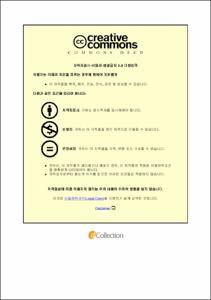Optimum dietary DHA and EPA levels in juvenile rock bream, Oplegnathus fasciatus
- Abstract
- Experiment 1.
Optimum dietary DHA level in juvenile rock bream, Oplegnathus fasciatus.
A feeding trial was conducted to evaluate the optimum dietary level of docosahexaenoic acid (DHA,22:6n-3) based on growth and non-specific immune responses in juvenile rock bream, Oplegnathus fasciatus. A basal DHA diet was used as a control, and six other diets were prepared by supplementing 0.00, 0.40, 0.80, 1.20, 1.60, 2.00 or 4.00% DHA. The actual DHA concentrations of the diets were 0.10, 0.48, 0.89, 1.31, 1.76, 2.12 and 4.14% (DHA0.10, DHA0.48, DHA0.89, DHA1.31, DHA1.76, DHA2.12 and DHA4.14) diets, respectively. Triplicate groups of fish (initial body weight, 1.05 ± 0.1 g) were fed one of 7 experimental diets at a rate of 4% body weight for 8 weeks. At the end of the feeding trial, final weight, weight gain, specific growth rate and feed efficiency of fish fed DHA1.31, DHA1.76, DHA2.12 and DHA4.14 diets were significantly higher than those of fish fed DHA0.10, DHA0.48 and DHA0.89 diet (P<0.05). The broken-line analysis of weight gain indicates that the optimum dietary DHA level could be 1.27%. Superoxide dismutase activity (SOD) of fish fed DHA1.31 and DHA1.76 diets were significantly higher than those of fish fed the DHA0.10, DHA0.48 and DHA0.89 diets. However, there were no significant differences in SOD among fish fed DHA1.31, DHA1.76, DHA2.12 and DHA4.14 diets. Fish fed DHA1.76, DHA2.12 and DHA4.14 diets showed significantly higher lysozyme activity than did fish fed the DHA0.10, DHA0.48 and DHA0.89 diets. However, there were no significant differences in lysozyme activity among fish fed DHA1.31, DHA1.76, DHA2.12 and DHA4.14 diets. Therefore, the optimum dietary DHA level could be greater than 1.27% but less than 1.31% in juvenile rock bream diet.
Experiment 2.
Optimum dietary EPA level in juvenile rock bream, Oplegnathus fasciatus.
A feeding trial was conducted to evaluate the optimum dietary level of eicosapentaenoic acid (EPA,20:5n-3) based on growth and non-specific immune responses in juvenile rock bream, Oplegnathus fasciatus. A basal EPA diet was used as a control, and six other diets were prepared by supplementing 0.00, 0.40, 0.80, 1.20, 1.60, 2.00 or 4.00% EPA. The actual EPA concentrations of the diets were 0.05, 0.43, 0.85, 1.30, 1.68, 2.10 and 4.12% (EPA0.05, EPA0.43, EPA0.85, EPA1.30, EPA1.68, EPA2.10 and EPA4.12) diets, respectively. Triplicate groups of fish (initial body weight, 1.06 ± 0.1 g) were fed one of 7 experimental diets at a rate of 4% body weight for 8 weeks. At the end of the feeding trial, final weight, weight gain, specific growth rate and feed efficiency of fish fed EPA1.68, EPA2.10 and EPA4.12 diets were significantly higher than those of fish fed EPA0.05, EPA0.43, EPA0.85 and EPA1.30 diets (P<0.05). The broken-line analysis of weight gain indicated that the optimum dietary EPA level could be 1.26% diet. Superoxide dismutase activity (SOD) of fish fed EPA1.68, EPA2.10 and EPA4.12 diets were significantly higher than those of fish fed EPA0.05, EPA0.43, EPA0.85 and EPA1.30 diets. However, there were no significant differences in SOD among fish fed EPA1.68, EPA2.10 and EPA4.12 diets. Fish fed EPA2.10 and EPA4.12 diets showed significantly higher lysozyme activity than did fish fed EPA0.05, EPA0.43, EPA0.85, EPA1.30 and EPA1.68 diets. However, there were no significant differences in lysozyme activity among fish fed EPA2.10 and EPA4.12 diets. Therefore, the optimum dietary EPA level could be greater than 1.26% but less than 1.68% in juvenile rock bream diet.
- Issued Date
- 2016
- Awarded Date
- 2016. 2
- Type
- Dissertation
- Publisher
- 부경대학교 대학원
- Affiliation
- 부경대학교 대학원
- Department
- 대학원 수산생물학과
- Advisor
- 배승철
- Table Of Contents
- Abstract ⅱ
I. General Introduction 1
II. Optimum dietary DHA levels in juvenile rock bream, Oplegnathus fasciatus
Abstract 3
Materials and Methods 5
Results 12
Discussion 14
Tables and Figures 18
References 32
III. Optimum dietary EPA levels in juvenile rock bream, Oplegnathus fasciatus
Abstract 38
Materials and Methods 40
Results 46
Discussion 48
Tables and Figures 52
References 64
IV. Acknowledgement 71
V. Appendix 73
- Degree
- Master
- Files in This Item:
-
-
Download
 Optimum dietary DHA and EPA levels in juvenile rock bream, Oplegnathus fasciatus.pdf
기타 데이터 / 709.63 kB / Adobe PDF
Optimum dietary DHA and EPA levels in juvenile rock bream, Oplegnathus fasciatus.pdf
기타 데이터 / 709.63 kB / Adobe PDF
-
Items in Repository are protected by copyright, with all rights reserved, unless otherwise indicated.